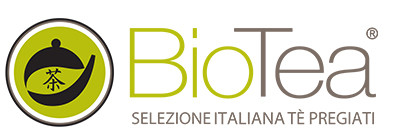No products
Product successfully added to your shopping cart
There are 0 items in your cart. There is 1 item in your cart.
The Bioteas
It is important to understand that Chinese people like drinking different Tea varieties. Depending on the growing methods and on the leaf processing of the Camellia Sinensis, Teas have different fragrances and tastes, similarly to the wines in the western countries.
There are five main Tea types:
WHITE TEA
It is named White Tea because of the color of its infusion that is straw-yellow. When its leaves are completely processed, their color is silvery. It is grown in minimum quantities in China. This is the most valuable Tea variety on the market, it is so valuable that it used to be grown on the secret imperial gardens for the Emperor’s use only; young girls in gloves used to cut its bud only, sometimes they also cut the first small leaf and let them both desiccate on special trays. The best Tea quality is normally harvested in spring, when Tea buds are still covered with the typical white fluffs. This variety undergoes virtually no transformation: the leaves are simply allowed to dry and desiccate. Its taste is subtle, sweet and delicate. You need to have a well-trained palate to taste this Tea or else you could be disappointed.
GREEN TEA
Green Tea is the Tea of the origins, it has been known in China for five millennia. This Tea is desiccated and then it is roasted (in China) or steamed (in Japan and rarely in China) in order to allow preservation and avoid fermentation. At this stage leaves are rolled up and selected; in China this work is mostly carried out by hand. The best Green Teas are grown in China, Japan and Taiwan, and it is the favorite drink of Chinese, Japanese and many of North Africa's countries. Green Tea is surely the most popular Tea thanks to its healing powers and to the outstanding amount of antioxidants it contains. In China the infusion color is crystal-clear and varies from green-orange to pale rose. It is very fragrant and has a grassy and floral taste.
OOLONG TEA (medium fermented)
Oolong is a Chinese word meaning ’black dragon’; it is an intermediate Tea, between Green and Black Tea; fermentation is only partial and is stopped through roasting. Therefore, Oolong combines the features of both Teas: it is gentler than Black Tea and less fresh and vegetal than Green Tea. Chinese Oolong is subjected to fermentation (12-20% of Black Tea fermentation); this process keeps its freshness intact, it enhances its fragrance and, most importantly, it does not spoil any of its therapeutic powers. Its infusion provides a pale yellow Tea, its taste suggests spring herbs. The Oolong Teas produced in Taiwan are subjected to a fermentation of up to 60% of the whole output and is therefore closer to Black Tea. Its infusion provides a gold yellow color and its taste is slightly similar to orchid. This Tea is low in caffeine, it is a morning Tea and can be drunk at all meals.
BLACK TEA
The Chinese name of this tea is actually "Red Tea", but the English lay down the law in this subject. And, as George Orwell maintained in his article entitled "a nice cup of Tea", Black Tea is the only Tea that is fit for this name. This was the favorite Tea of the English and was the most popular Tea in western countries; in supermarkets we mostly find this Tea variety, although its quality is often very poor. English people brought the cultivation of Black Tea to India and Ceylon (where a wild variety of Tea was already grown), as the import of Tea from China caused so much trouble. The English also brought the habit of adding sugar and milk to sweeten the strong taste of tannin. The color of its leaves is due to oxidation and varies from green to copper-red, whereas the color of infusion is golden brown. Its taste is intense, full-bodied and sweet. The fermentation (oxidation) of this Tea is the key moment of its preparation. The chemical process is partly a mystery: its leaves are just left in contact with oxygen. When fermentation is complete, leaves are roasted in order to stop decomposition caused by oxidation. Last step- the selected leaves are put through huge sieves which select leaves depending on their size. The type of leaf or fragment determines the difference among the hundreds of Black Tea varieties that you can find on the market. In order to choose the suitable varieties we should be able to understand the unclear abbreviations on the back of Tea boxes.
PU-ERH BLACK TEA
In China Pu-Erh Tea is the only Black Tea. Unlike widely believed in Europe, fermented Teas are called "Red Teas". This Pu-Erh Tea is named after the area where it is grown, the Chinese province of Pu-Erh, that is situated in the region of Ying- Shenin in Yunnan. This Tea has many healing powers, in particular it helps digestion, it reduces cholesterol rate in the blood and balances excess alcohol consumption. In Chinese traditional medicine Pu-Erh Tea is a remedy against bad mood. It is also called post-fermented Tea because it is subjected to a particular processing which, to date, is one of the Chinese state secrets. This process provides this Tea with a particular taste of wet soil, that gets more and more intense with time. Its color is similar to that of aged cognac. After harvesting leaves are laid on looms and undergo their first fermentation. Later, they are selected, fermented again and they are often left underground for aging. The most valuable varieties are even refined in cellar for years. Tea collectors can boast Pu-Erh Tea aged over one hundred years.
